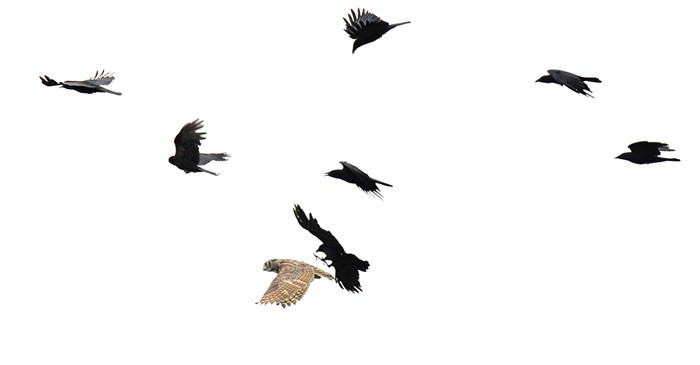What do songbirds do when they see a threat? Believe it or not, sometimes they fight back.
Does that come as a surprise? If so, that’s probably because you’re used to how birds respond to you when they think you’re too close. That is, they quickly fly up and away without hesitation as you approach. It turns out that little birds are not afraid to stand up to certain enemies, even large ones like hawks, falcons, owls, snakes, and cats. To ward off these predators, songbirds deploy a defensive tactic called mobbing.
What is the purpose of mobbing?
Songbirds want to blow the predator’s cover and get the larger bird to leave. They’ll come together as a group, as small as two or three birds, and start swarming around the predator, all chattering and calling noisily until the predator flies away.
The alarm calls used will attract a mixed species of songbirds, including chickadees, titmice, blackbirds, grackles, kingbirds, jays, and crows. Though they normally compete with each other for just about everything — food, territory, nesting sites, mates — songbirds are willing to set aside their differences to overthrow the bigger enemy.
How does mobbing work?
First, a songbird spies their enemy perched in a tree. Then, the bird issues an alarm call. Other birds within hearing distance recognize the warning call and gather around. The noisy confrontation then commences. Should you happen to come across the chattering frenzy of songbirds raising a ruckus, peer up into the tree branches, and you may see their target is a dozing owl or a perched hawk. If it happens to be winter, you’ll have an excellent viewing opportunity.
Part of the pleasure of watching birds is discovering the fascinating ways they behave. If you’d like to become more connected to the natural world outside your door, keep your feeders filled with top-quality seeds, grains, and nuts. Lyric Supreme Mix uses top quality, bird-tested ingredients and is designed to attract the highest variety of species.
